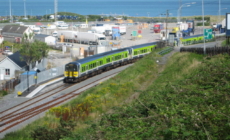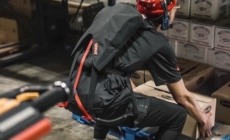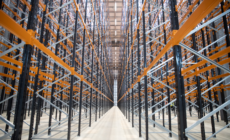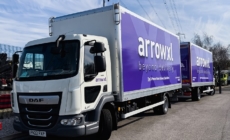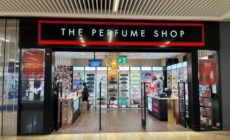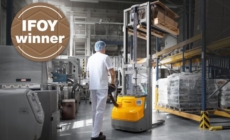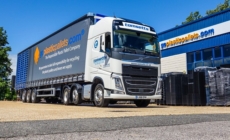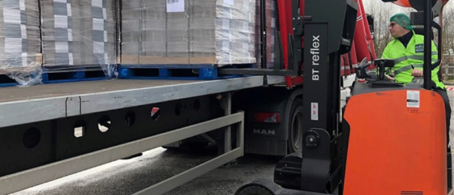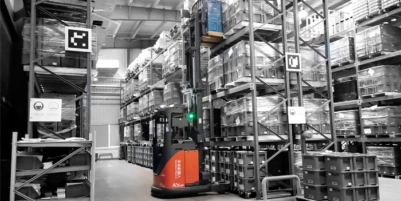-
ROSSLARE EUROPORT TARGETS HEALTH & SAFETY WITH CAMERA TELEMATICS PARTNERSHIP - 2 days ago
-
Landmark Study Reveals Wearable Robotics Significantly Boost Safety and Efficiency in Industrial Environments - July 24, 2024
-
Visku Tackle The Retail Seasonality Challenge One Pallet At A Time - July 22, 2024
-
KAMMAC AND BERGEN LOGISTICS STRENGTHEN FASHION & LIFESTYLE SERVICES IN THE UK - July 19, 2024
-
TENTBOX EXTENDS PARTNERSHIP WITH ARROWXL TO SUPPORT INCREASING DEMAND - July 17, 2024
-
The Perfume Shop improves customer journeys while driving profitability in partnership with Scurri - July 17, 2024
-
ZEROMISSION SECURES £2.3M ($3M) INVESTMENT TO ACCELERATE ELECTRIC FLEETS - July 16, 2024
-
BCMPA CELEBRATES SUCCESS OF 2024 CONFERENCE - July 15, 2024
-
Best of the Best: Jungheinrich Celebrates Triple International Award Win - July 12, 2024
-
GOPLASTICPALLETS.COM CALLS ON NEW CHANCELLOR RACHEL REEVES TO CONSIDER PLASTIC PACKAGING TAX REFORM - July 10, 2024
Toyota Material Handling UK has helped the award-winning premium snack producer, Burts Snacks, to reduce intralogistics costs and achieve significant handling efficiency gains across its business.
During a review of the company’s materials handling operation, Toyota identified that by replacing counterbalance machines with multi-functional reach trucks capable of operating outside a building, Burts Snacks could not only reduce the number of forklifts within its fleet – with a resultant drop in maintenance expenditure – but also boost productivity and improve on-site safety.
Burts Snacks manufactures its growing range of own-brand, licensed and private label snacks from sites in Plymouth and Leicester. At both facilities Toyota recommended switching counterbalance trucks for Toyota Reflex outdoor reach trucks.
The Toyota Reflex outdoor reach truck has greater ground clearance than traditional models, which along with rubber wheels with tread and a revised gearbox configuration, allows it to work in yards, block-stacking, servicing outdoor racking and loading and unloading vehicles from the side.
It can also perform inside a building and at Burts Snacks’ Plymouth site, the trucks are fitted with Kooi extra long forks with fork cameras to allow pallet loads to be put away within the storage unit’s double deep racking scheme.
In addition Toyota provided a mix of electric counterbalance models, powered pallet trucks and order pickers.
The equipment at both sites has been supplied on a long-term rental contract that includes service and maintenance.
Burts Snacks’ warehouse manager, Daniel Cresswell, originally approached Toyota to supply new, ultra energy efficient trucks to replace a number of existing electric-powered counterbalance models that had been under utilised for some time and were nearing the end of their fixed contract period.
“After seeing the Toyota proposition for our fleet, it was a simple decision for us,” Daniel Cresswell says.
All of Burts Snacks’ new machines feature Toyota’s I_Site integrated telematics package as standard. The I_Site system allows truck operating hours to be closely monitored along with battery utilisation across the fleet. This feature has been particularly beneficial at the Plymouth site where the trucks are powered by a combination of Nexus fast charge, lithium-ion and lead acid batteries.
“The I_Site system monitors the forklift’s battery and highlights if the power source is being managed incorrectly. For example, if a lead acid battery is opportunity charged, this can cause significant implications to the battery. The I_Site technology can identify this before any harm is done,” says Mr Cresswell.
I_Site also provides valuable data on the efficiency and safety of Burts Snacks’ lift truck operators, as Daniel Cresswell explains: “Because each operator requires his or her own PIN code or smart access card to operate a truck, they quickly realise that they are accountable for their actions during the course of a shift. We find that this accountability prompts forklift drivers to take more care when going about their daily routine, which of course, in turn, results in a safer environment and reduced product, truck or building infrastructure damage.”


